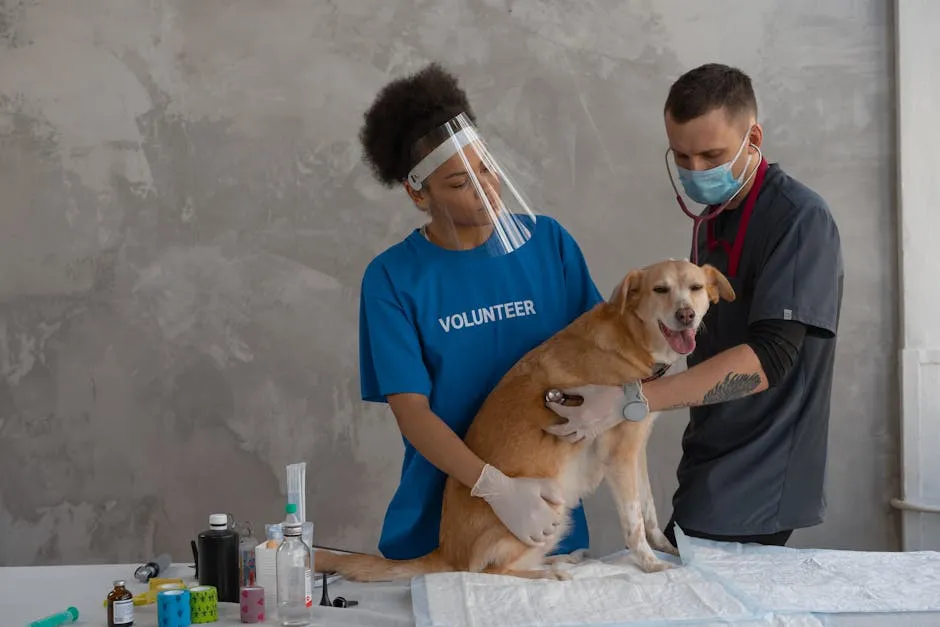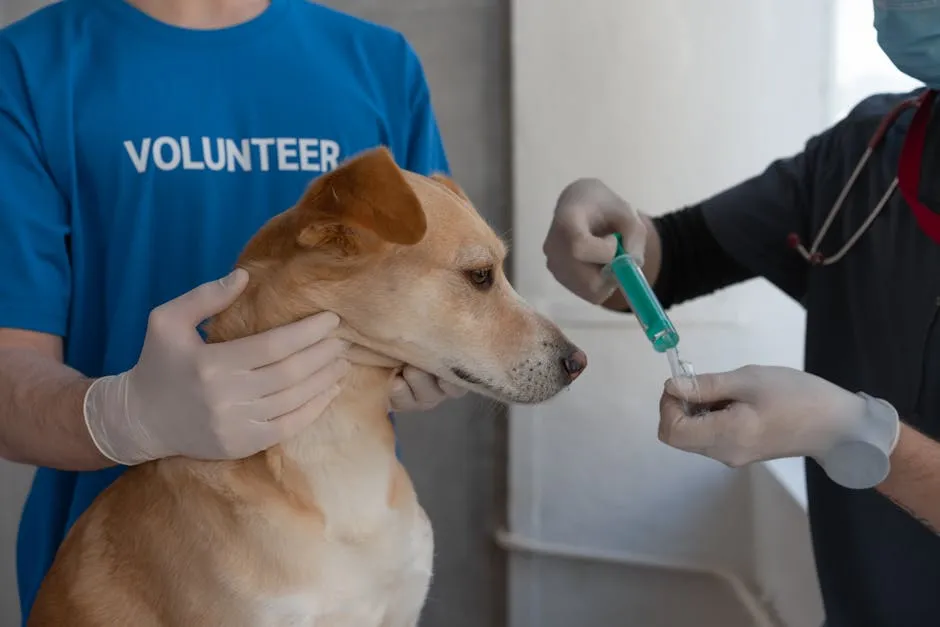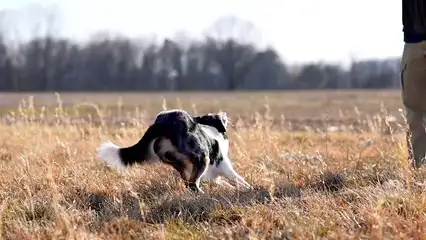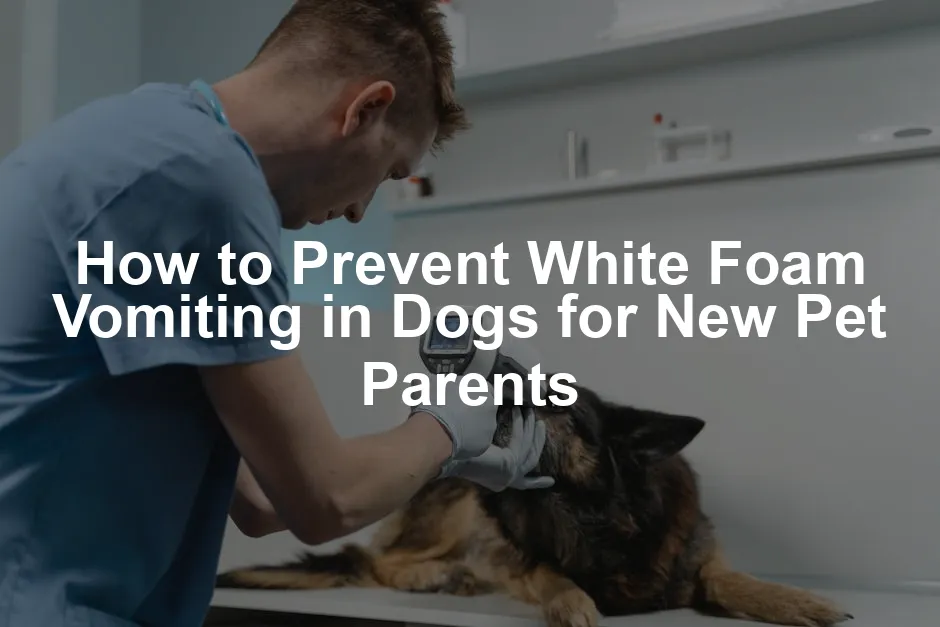Introduction
Seeing your dog vomit white foam can be alarming. As a new pet parent, it’s crucial to understand this symptom. Knowledge about potential causes helps you respond appropriately. This article will explore the reasons behind white foam vomiting, ways to prevent it, and when to contact your veterinarian.
And while you’re keeping an eye on your furry friend, why not ensure their comfort? A PetFusion Ultimate Dog Bed offers the perfect spot for them to relax and recuperate. Dogs love a cozy bed, especially when they’re not feeling their best!

Summary and Overview
White foam vomiting in dogs usually consists of saliva and stomach acid. It can occur for several reasons, such as an empty stomach or gastrointestinal irritation. Common causes include indigestion, eating grass, and even more serious conditions. Monitoring your dog’s health and behavior is vital for early detection of issues. This article focuses on prevention strategies that new pet parents should follow. Awareness of this condition’s seriousness can help you take proactive steps for your dog’s well-being.
Speaking of monitoring, have you considered using a Dog First Aid Kit? It’s essential for emergencies, ensuring you’re always prepared for those unexpected moments when your pup might need a little extra care.
Understanding White Foam Vomiting in Dogs
What Does White Foam Vomit Indicate?
White foam vomit is typically a mix of saliva and stomach acid. When a dog’s stomach is empty, excess saliva may accumulate. This foam often signals that something isn’t right in your dog’s digestive system. Understanding these signals is essential for ensuring your dog’s health.
Common Causes of White Foam Vomiting
Indigestion
Indigestion can often trigger vomiting. It happens when dogs eat too quickly or consume something that doesn’t sit well. If your dog seems uncomfortable after eating, watch for signs like bloating or excessive drooling. To help with this, consider using Dog Training Clickers to teach your dog to slow down during mealtime!
Eating Grass
Many dogs eat grass, which can lead to vomiting. This behavior might stem from a desire to induce vomiting or simply because they enjoy the taste. If your dog frequently consumes grass, monitor their behavior afterward to see if it results in vomiting. To deter this habit, consider engaging them with a fun Outward Hound Hide-A-Squirrel Puzzle Toy to keep their mind occupied!
Bilious Vomiting Syndrome
This condition occurs when dogs vomit yellow or white foam, usually on an empty stomach. It often happens in the morning. Feeding your dog a small meal before bedtime may help alleviate this issue.
Toxin Ingestion
Dogs might accidentally consume toxic substances. Common household toxins include certain plants, cleaning supplies, and specific human foods. Always be vigilant about what your dog has access to, as these can lead to serious health issues. Consider using a PetSafe Gentle Leader Head Collar to help control their outdoor explorations!
Bloat (GDV)
Bloat is a severe condition where the stomach fills with gas and twists. Symptoms include vomiting white foam, restlessness, and a swollen abdomen. If you suspect bloat, seek emergency veterinary care immediately.
Other Health Issues
Various other health problems can lead to white foam vomiting. Conditions such as pancreatitis, kidney issues, or infections require veterinary diagnosis and treatment. If vomiting persists or is accompanied by other symptoms, contact your vet promptly.
By understanding these causes, you can take meaningful steps to prevent white foam vomiting in your dog. Awareness is the first step toward better health for your furry friend.
Bilious Vomiting Syndrome
Bilious vomiting syndrome happens when dogs vomit yellow or white foam. This often occurs on an empty stomach, usually in the morning. Dogs may show signs like lethargy or discomfort. Feeding your dog a small meal before bedtime can help prevent this issue. It keeps their stomach from being empty overnight, which reduces the chance of vomiting. You might also want to try Zesty Paws Probiotic Chews for Dogs to support their digestive health!
Toxin Ingestion
Dogs can accidentally ingest harmful substances at home. Common household toxins include:
- Chocolate
- Grapes
- Onions
- Certain plants (like lilies)
- Cleaning products
These can cause serious health issues, including vomiting. If you suspect your dog has consumed something toxic, contact your vet immediately. You might want to have a Dog Grooming Scissors Set handy for those moments when you need to ensure their coat is free of any potential irritants!
Bloat (GDV)
Bloat, or gastric dilatation-volvulus (GDV), is a severe condition. It occurs when the stomach fills with gas and twists. This can lead to life-threatening pressure. Symptoms include restlessness, a distended abdomen, and vomiting white foam. If you notice these signs, seek emergency veterinary care right away.
Other Health Issues
Several health conditions can cause white foam vomiting. Pancreatitis, kidney problems, and infections may lead to this symptom. If your dog vomits consistently or shows other concerning signs, consult your veterinarian for an evaluation. Early diagnosis can be crucial in managing these conditions effectively.
First Steps to Take When Your Dog Vomits White Foam
Initial Assessment
When your dog vomits white foam, start with an assessment. Observe their behavior closely. Are they acting normally, or do they seem lethargic? Check the vomit for any unusual items or colors. This can help determine the cause. If your dog has vomited multiple times or shows other symptoms, it’s time to act.
While you’re assessing, how about offering your dog a Dog Car Seat Cover? It makes travel much more comfortable and protects your seats from any potential messes!

Home Care
For initial home care, withhold food and water for about 12 hours. This allows your dog’s stomach to settle. After that, slowly reintroduce food. Offer bland options like boiled chicken and white rice. This can help ease any gastrointestinal discomfort. Monitor their response closely. If vomiting continues or they show distress, contact your vet for further guidance.
Best Practices to Prevent White Foam Vomiting
Preventing white foam vomiting in dogs starts with understanding their needs. Here are some essential practices every new pet parent should adopt.
Dietary Management
A balanced diet is crucial for your dog’s health. Ensure your dog eats high-quality food that meets their nutritional needs. Portion sizes matter too! Overfeeding can lead to obesity and digestive issues. Consider trying Blue Buffalo Life Protection Formula Dog Food for a nutritious option!

Consider using a slow feeder bowl. This tool helps prevent fast eating, which can cause indigestion. When dogs gulp their food, they often swallow air. This excess air can lead to discomfort and vomiting. A PetSafe Healthy Pet Gravity Feeder can be a game changer!
Introduce new foods gradually. Sudden changes can upset your dog’s stomach. If you’re switching brands or types, mix the new food with the old for a few days.
Environmental Safety
Keeping your home safe is essential. Store toxic substances out of reach. Common household items like cleaning supplies, certain plants, and human foods can be harmful.
Monitor what your dog eats outdoors. Dogs love to investigate, and they might munch on something dangerous. Always supervise them during walks or playtime outside. A Dog Cooling Mat can also help keep them comfortable during hot days when they’re more likely to explore!

Regular Veterinary Care
Regular check-ups are vital for your dog’s well-being. Schedule annual visits to your veterinarian. These appointments allow for vaccinations and routine health screenings.
Discuss any dietary changes or health concerns with your vet. They can provide tailored advice to keep your pup healthy. Don’t forget to ask about a Dog Shampoo and Conditioner Set for keeping their coat healthy and shiny!

Hydration
Hydration is key to your dog’s health. Always provide fresh, clean water. Dogs can be prone to dehydration, especially if they vomit.
Encourage your dog to drink regularly, especially on hot days. You can add ice cubes to their water bowl for a fun twist. A Doggie Water Bottle with Bowl is perfect for outings!
Avoiding Stress
Stress can adversely affect your dog’s stomach. Create a calm environment at home. Provide a safe space for your dog to retreat when feeling anxious.
Regular exercise can also help reduce stress. A daily walk or playtime can make a difference in their mood. A Dog Agility Training Equipment Set can also provide a fun way to exercise!

By following these best practices, you can significantly reduce the chances of your dog experiencing white foam vomiting. Keeping a close eye on their diet, environment, and overall health will contribute to a happier, healthier pup.
Avoiding Stress
Stress can significantly impact your dog’s stomach. When dogs feel anxious, their bodies react. This can lead to gastrointestinal upset and even vomiting white foam. As a new pet parent, creating a calm environment is essential.
Start by establishing a routine for your dog. Regular feeding, walking, and play times help them feel secure. Consistency is key! Consider using calming aids like Calming Pheromone Diffuser for Dogs to help soothe their nerves!
Socialization also plays a vital role in stress reduction. Expose your dog to various environments, people, and pets gradually. This helps them build confidence and reduces anxiety in new situations.
Lastly, don’t forget about exercise! Daily walks or playtime can release pent-up energy. A tired dog is often a happy dog, which leads to less stress overall. If your dog seems particularly anxious, don’t hesitate to discuss this with your vet. They may recommend additional strategies or resources.
Conclusion
In summary, understanding and preventing white foam vomiting in dogs is crucial for new pet parents. By recognizing the causes and implementing preventive measures, you can help your furry friend avoid this distressing symptom.
While it can be alarming, remember that many causes are manageable with proper care. Stay vigilant and maintain open communication with your veterinarian to ensure your dog’s health and happiness. And don’t forget to keep your dog’s teeth clean with the Vet’s Best Dog Toothbrush and Toothpaste Set!
FAQs
What should I do if my dog vomits white foam occasionally?
If your dog occasionally vomits white foam, monitor their behavior. Look for signs of lethargy or discomfort. If they seem fine after a single episode, it may not be serious. However, if vomiting persists or is accompanied by other symptoms, consult your vet.
Can white foam vomiting be a sign of serious illness?
Yes, white foam vomiting can indicate underlying health issues. Conditions like pancreatitis or kidney failure might manifest this way. If your dog shows other concerning symptoms, it’s essential to seek veterinary care promptly.
Is it normal for dogs to vomit white foam after eating grass?
Yes, it can be normal. Dogs often eat grass for various reasons, including stomach upset or simply because they enjoy it. Eating grass may irritate their stomach, leading to vomiting white foam. This foam usually consists of saliva and stomach acid. If your dog eats grass and vomits occasionally, it may not be a cause for concern. However, frequent occurrences should be monitored closely.
How can I tell if my dog has ingested something toxic?
Watch for specific symptoms if you suspect toxin ingestion. Common signs include: – Vomiting, especially if it’s continuous – Diarrhea or blood in the stool – Excessive drooling or panting – Lethargy or weakness – Trembling or seizures If you notice these symptoms, contact your veterinarian immediately. Quick action can be crucial in these situations.
What are the best foods to feed a dog prone to vomiting?
Feeding a dog with a sensitive stomach requires careful selection. Consider these options: – **High-quality kibble**: Look for brands formulated for sensitive stomachs. – **Bland diet**: Boiled chicken and white rice can help settle their stomach. – **Small, frequent meals**: This approach prevents overloading their digestive system. – **Limited ingredients**: Foods with fewer ingredients can help identify allergens. Always transition to new foods gradually to avoid upsetting their stomach further.
When is vomiting white foam considered an emergency?
Certain symptoms indicate that white foam vomiting is an emergency. Seek veterinary assistance if your dog experiences: – Repeated vomiting over several hours – Signs of severe lethargy or weakness – Abdominal swelling or pain – Blood in vomit or stool – Difficulty breathing These symptoms may indicate serious conditions like bloat or organ failure. Prompt veterinary care is essential in these cases.
Can stress cause my dog to vomit white foam?
Absolutely! Stress and anxiety can lead to gastrointestinal issues in dogs. Factors like loud noises, changes in routine, or new environments can trigger these reactions. When dogs are anxious, their bodies produce excess stomach acid. This can result in vomiting white foam. To help reduce stress, create a calm environment at home. Regular exercise and consistent routines can also make a significant difference in your dog’s anxiety levels. If stress persists, consult your veterinarian for additional support or treatment options.
Please let us know what you think about our content by leaving a comment down below!
Thank you for reading till here 🙂
If you’re concerned about your dog’s vomiting, you can learn more about dog vomiting white foam and its implications.
All images from Pexels





